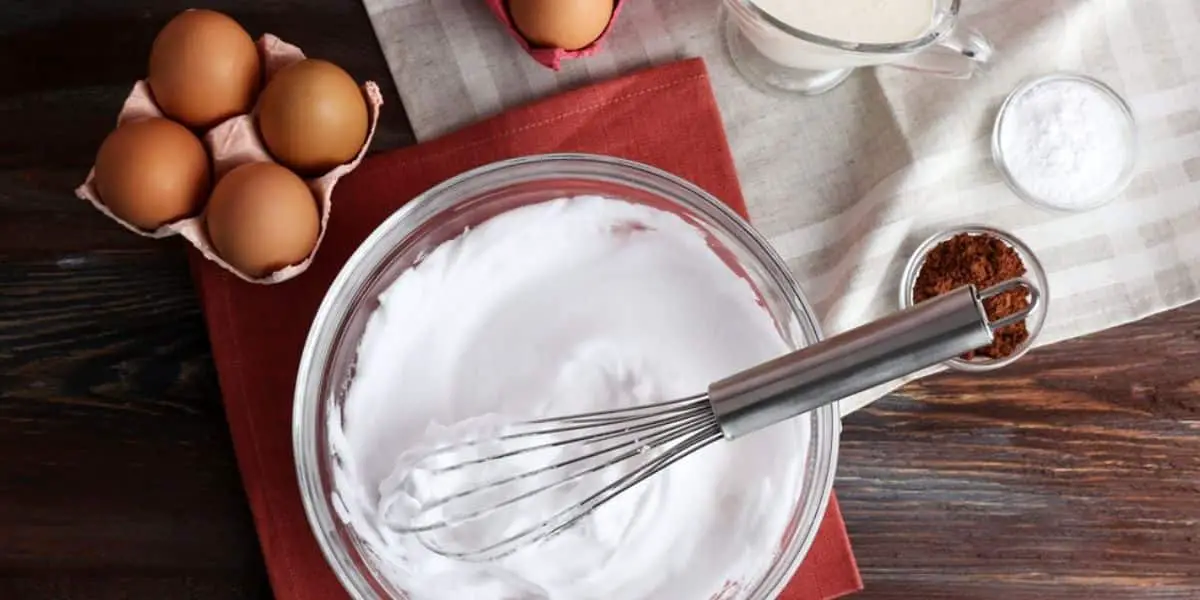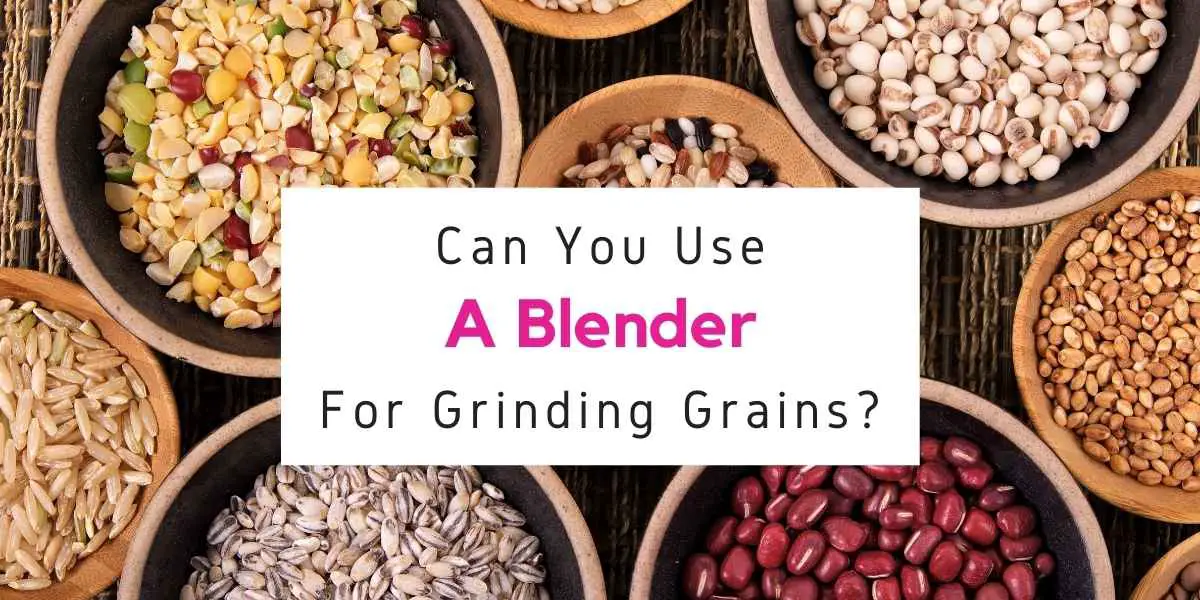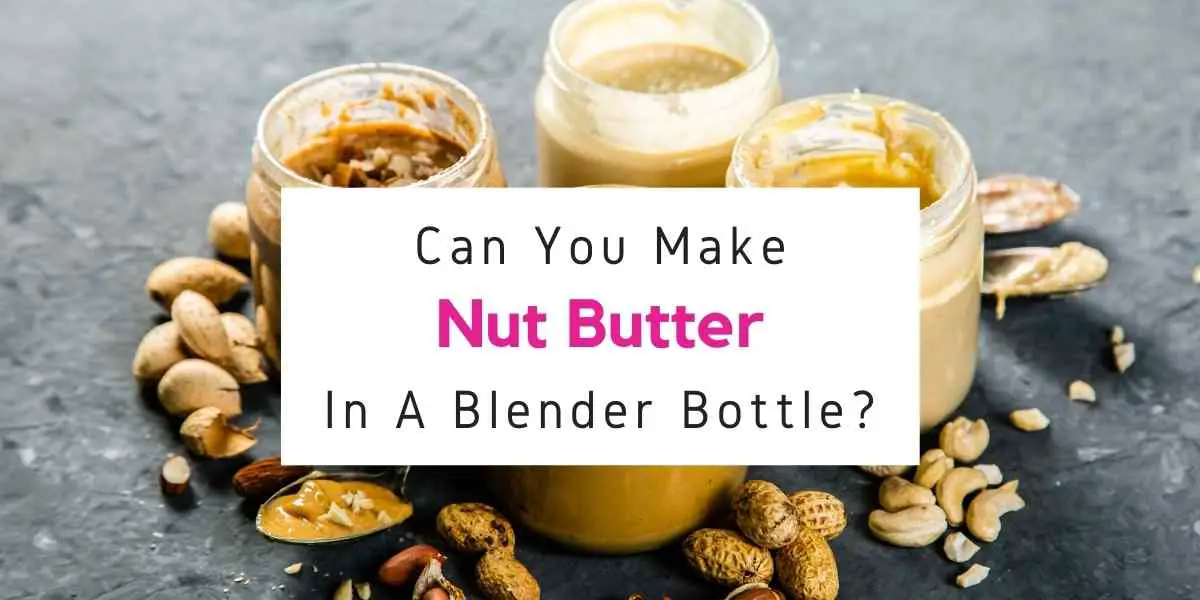Can you whip egg whites in a blender? Yes, you can.
But, in your best interest, beat your eggs by hand or with a mixer.
Blenders run at a high speed, and this has the capacity of damaging the egg white texture if left to run for too long.
Looking for an easier way to whip your egg whites? Or thinking of ditching the manual method for a blender? This article answers some of the questions you may have. Just read on!
You can whip egg white with blender. However, with a blender, you run the risk of overmixing your egg whites until they become overly soft. Overmixing also busts the protein particles and causes the egg whites to easily untrap air. Whipping your egg whites by hand or with a mixer would be more appropriate if you want to avoid any mistakes.
Can You Whip Egg Whites In A Blender?
Yes, you can beat egg white using blender. But, when you overbeat your egg white, they turn grainy and soft. Using them like this in your food would be wrong, as they may not offer the right texture you’d love to have in your foods. It’s best to just throw them out if they reach this stage.
A lot of professional chefs even use their blenders because it’s faster and less tasking to handle. However, it is unadvisable to use blenders, especially on small portions of egg whites.
Egg whites (otherwise known as abdomen), according to eggyguru.com are a mixture of 90% water and 10% protein.
When whipped, the protein structure of the abdomen breaks down.
These busted protein particles, over time, are then bunched together to create an expanded structure that makes for a fantastic addition to your baked foods.

Check out my favorite blender for egg whites >>
How Do You Whip Egg White In A Blender?
Here’s a step-by-step guide on how to whip egg whites in a blender:
Materials Needed:
- Blender
- Eggs
- Bowl
- Optional: cream of tartar, sugar, or salt (depending on recipe)
Step 1: Separate Egg Whites
Carefully separate the egg whites from the yolks. Make sure no yolk gets into the egg whites, as this will hinder the egg whites from whipping properly.
Step 2: Add Egg Whites to Blender
Add the egg whites to the blender. If you’re using a recipe that calls for it, add any other ingredients like cream of tartar, sugar, or salt at this point as well.
Step 3: Blend on Low
Begin blending the egg whites on low speed. Gradually increase the speed to medium, then high as the egg whites start to froth.
Step 4: Monitor Progress
Monitor the progress of the egg whites as you blend them. The goal is to achieve stiff peaks, which means the egg whites hold their shape when the beaters are lifted out. Avoid over-beating the egg whites, as they can become dry and clumpy.
Step 5: Use as Desired
Once the egg whites have reached the desired consistency, use them in your recipe as directed. You can fold them gently into other ingredients, such as for a meringue, or use them as a topping for pies or cakes.
Step 6: Clean Up
Clean the blender and any utensils used for beating the egg whites with warm, soapy water. Rinse and dry them thoroughly.
That’s it! With these simple steps, you can whip egg whites in a blender to make light and fluffy creations.
Related Post: Can You Make Whipped Cream In A Blender?
Does Blending Egg Whites Make Them Fluffly?
Yes, blending egg whites can make them fluffy. When egg whites are blended, the protein molecules in them unfold and then re-form into a new structure that is filled with air pockets. This creates a foam-like texture that makes the egg whites light and fluffy.
Blending egg whites is a common technique used in recipes like meringues, soufflés, and angel food cakes to add lightness and volume to the final product.
It’s important to note that the eggs should be at room temperature before blending, and any equipment used to blend the egg whites should be clean and free of any grease or residue, as this can hinder the formation of the foam.
Tips To Blend Egg Whites In A Blender
Here are some tips to blend egg whites in a blender:
- Use a clean and dry blender: Make sure your blender is clean and dry before using it to blend egg whites. Any moisture, grease or residue left over from previous blending could affect the ability of egg whites to whip properly.
- Use room temperature eggs: Let the eggs sit out at room temperature for about 30 minutes before using them. This will help them whip up better and faster.
- Add an acid: Adding an acid like cream of tartar or lemon juice can help stabilize the egg whites and create a stronger foam.
- Start on low speed: Begin blending the egg whites on low speed and gradually increase the speed to medium and then high speed. This will help ensure that the egg whites are evenly mixed and don’t become over-beaten.
- Don’t over-beat: Stop blending as soon as stiff peaks form. Over-beating can cause the egg whites to become dry and clumpy.
- Use a metal or glass bowl: Using a metal or glass bowl can help the egg whites to whip up faster and create a better foam. Avoid using plastic bowls as they can retain grease and residue which can hinder the egg whites from whipping properly.
- Use the right type of blender: Not all blenders are created equal, and some are better suited for blending egg whites than others. A high-speed blender with a narrow and deep blending jar is ideal for whipping egg whites.
By following these tips, you can ensure that your egg whites whip up light, fluffy, and perfectly every time.
Can I Use Hand Blender To Whip Egg White?
Yes, you can also use your hand blender (aka immersion blender) if you don’t have a mixer or can’t take the stress of whisking by hand.
But, this, like every other thing, also depends on the peak you want to achieve.
Blenders cut through the egg whites to allow aeration.
So, you’d have to be fast while using a blender to keep the egg whites from losing all their consistency.
- Sophisticated Design - The ergonomic grip offers a non-slip and comfortable grip when continuously blending ingredients.
Can You Whip Egg White In A Nutribullet?
Of course! But, as with a blender, it’s advisable not to use this appliance at all.
As with a regular blender, you’d have to be extra careful not to overwhip or spill your egg whites.
You’d also have to blend on a pretty low speed to avoid coming up with overwhipped egg whites afterward.
- With 900 watts of power, the Pro is faster and stronger than the original, but just as simple to use. Load it up with dense whole foods like nuts, seeds, hard fruits, and kale, then push, twist and blend your way to a healthier lifestyle.
Can You Whip Egg White In A Mixer?
The short answer to this question is yes, you can use a mixer to whip egg whites.
Egg whites are particularly difficult to whip by hand, and using a mixer can help to get the job done more quickly and efficiently.
To begin, simply crack your eggs into the bowl of your mixer and beat on high speed until the mixture begins to form peaks. You will typically need to stop and scrape down the sides of the bowl every few minutes in order to keep things moving evenly.
Once you have achieved stiff peaks, you can remove your egg whites from the mixer and do whatever you would like with them, whether it’s folding them into other ingredients or using them as a topping on a dessert.
Overall, whipping egg white in a mixer is an easy and effective way to achieve great results every time!
Can You Whip Egg Whites By Hand?
Yes, you can. Whisking your egg whites by hand is one of the best ways of doing it.
It might take a longer time for you, but it’s worth it, if you ask me.
You run no risk of overbeating your egg whites, and you can easily achieve the desired peaks for your meals.
To whip your egg whites by hand, you’d need a whisk or fork.
Once you have either one of these, you’re ready to go.
First, set your eggs out and allow them to cool to room temperature.
Crack your eggs open and carefully separate the egg whites from the yolks.
Make sure the bowl you’re using is clean.
Glass and copper bowls are the best choice for mixing.
Unlike plastic bowls, they do not retain oil. So, avoid using plastic bowls and whisks.
After doing these, you can then whisk your egg. But, before whisking, you’d have to first determine the texture or peak you want.
Making this decision is usually dependent on your recipe.
Stages Of Whipping
Below are the different stages (or peaks) of whipping:
- Foamy peak: At this stage, your egg white has only been slightly mixed and would just be holding up. It would also have some foams and look a bit transparent.
- Soft peak: The egg white turns from opaque to white at this stage. When the bowl is tilted slightly, the egg whites would hold up their shape before bunching together again. It is usually at this stage that some recipes would require that you add other ingredients before you continue to whip that’s if you’re going beyond this stage.
- Firm peak: The abdomen would hold its shape longer than the soft peak, at this stage when the bowl is tilted, before gradually bunching together again.
- Stiff peak: This is the final peak you can achieve with your egg whites. At this stage, your egg whites would remain, as the name suggests, stiff when the bowl is slightly turned sideways.
Once you’ve determined the peak you’re aiming at, the next point of call would be to whip your egg.
Start by turning your whisk slowly for some minutes.
Then, gradually increase the pace until you achieve your desired peak.
This video might help you understand this better –
How Long Does It Take To Whip Egg Whites By Hand?
The duration it takes to whip your egg whites by hand varies depending on the peak you’re aiming at, the quantity of egg white as well as your arm strength.
If you’re whipping for foamy peaks, the process shouldn’t take more than one to two minutes.
Soft and firm peaks might take up 10-12 minutes, and even more, depending on how quickly you stir.
Stiff peaks would take you a long time to achieve. Just as the saying goes, “patience is the key.”
A lot of it would help you all the way to achieve any of the peaks you may want for your cooking.
Why Is My Egg White Not Fluffy?
There are a few reasons for this.
You might probably have done one or more of the following for your egg white not to be fluffy:
Used cold eggs
You must allow your eggs to cool to room temperature first after removing them from the fridge.
Cold eggs won’t expand properly or produce the fluff you want.
It would also be more difficult to separate the egg white from the yoke if you don’t allow them to cool to room temperature.
This is why you’d have to cool the eggs for a minimum of 30 minutes before cracking them and whisking them in a bowl.
Used the wrong equipment
The equipment you use is also very important.
Plastic containers usually retain oil and some other ingredients after use.
These residues can interfere with your whipping process, thereby causing your abdomen not to fluff.
Avoiding plastic bowls and whisks would be a better way to go.
You can use copper or aluminum bowls instead.
Chefs generally prefer copper because small particles of ions mix with the egg whites to increase their consistency as you whip.
Used a dirty bowl
Your egg white might not whip properly if they come in contact with the residues in your dirty bowl which is why you’d have to clean them properly before use.
Added sugar and other ingredients too early
Another reason could be that you did not add your ingredients at the right time.
The soft peak would be the best stage for you to start adding your sugar and tartar cream.
Anything you add before this peak could cause your egg whites not to fluff as you might love them to.
Overbeat the egg white
Overbeaten egg whites are useless.
They are way too grainy, soft, and dry and would not add the right texture you want in your foods if used.
This is why you must try to beat your egg whites carefully and just long enough for them to stiff.
You can watch this video on How To Whip Egg Whites Correctly for more information –
Relates Post: How To Make Meringue In A Blender
Conclusion – Can I Use Blender To Whip egg White?
Can I whip egg whites in a blender? Absolutely!
But, as I said in the main article, you must be helluva careful not to overwhip your egg whites such that they become useless.
To be on the safer side, you can carry out your whipping process by hand. To be honest, you’ll be really happy about it.
Do you have any questions you’d love to ask? Be free to ask them in the comment section below.
Enjoy!




